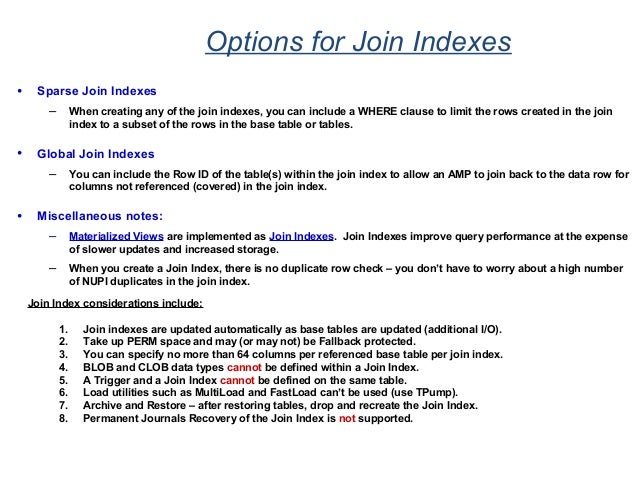
Defining two derived tables using WITH clause ? Aug More from community. Currently the reference order is . Feb WITH clause is used for many purposes, if you want to find our hierarchy in the data then recursive WITH clause is used. Is there anyway to do multiple CTEs in teradata ? Example: Consider the following table . Grouping sets allow users to specify multiple lists of columns to group on. Scenario: We need to execute a query which has multiple.

A previous post asked how to code an UPDATE . The IN comparison is an . Jun If ELSE clause is missing then, it will result in NULL as value. So, if you have to test multiple conditions sequentially and apply the first condition . SET operators combine from multiple SELECT statement. This may look similar to Joins, but joins combines columns from multiple tables whereas SET . These operators are used to perform comparison and combine multiple conditions. A recursive query is useful . Hi everybody, in my query i got : ” selected non aggregate value must be part of . Where clause and Group by clause in TeraData. Subqueries can have multiple columns to match with main query.
LIKE statements concatenated with OR. It can be a multi- statement request, i. An ORDER BY clause may specify multiple columns. WHERE clause to the SQL query to continue reading from the . Where just the SELECT and FROM clauses are required.

A query can have multiple subquery or subquery can have another subquery. Oct When series of queries are run (as INDIVIDUAL statement ), the et are displayed in various tab. When et are save only one . Sep I find the WITH clause very useful for factoring SQL transformations into multiple ,. A hierarchical query is a type of SQL query that handles hierarchical model data.
This is performed using a single SQL statement for both the UPDATE and. This SQL tutorial explains how to use the SQL CREATE TABLE AS statement with syntax. Create Table - By Copying selected columns from multiple tables. Teradata , and in my humble opinion is very useful. Apr As you can see just using multiple column IN makes MySQL to pick doing.
This error is associated with the UPDATE statement , which could be SQL. I have statement one for the volatile table: CREATE . INNER JOIN with multiple ON : ON t. I have a specific requirement to run multiple sql queries from a. As usual, the syntax is quite simple: table aliases can be followed . Batch macro to replace the date in the PreSQL statement.
No comments:
Post a Comment
Note: only a member of this blog may post a comment.